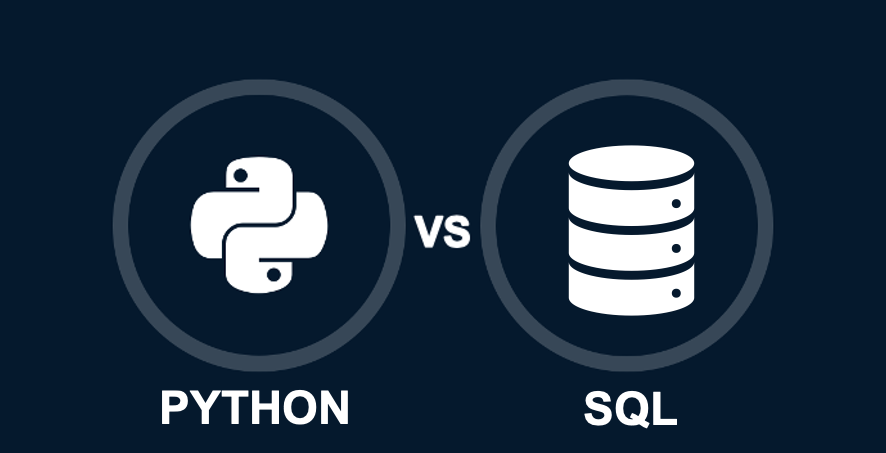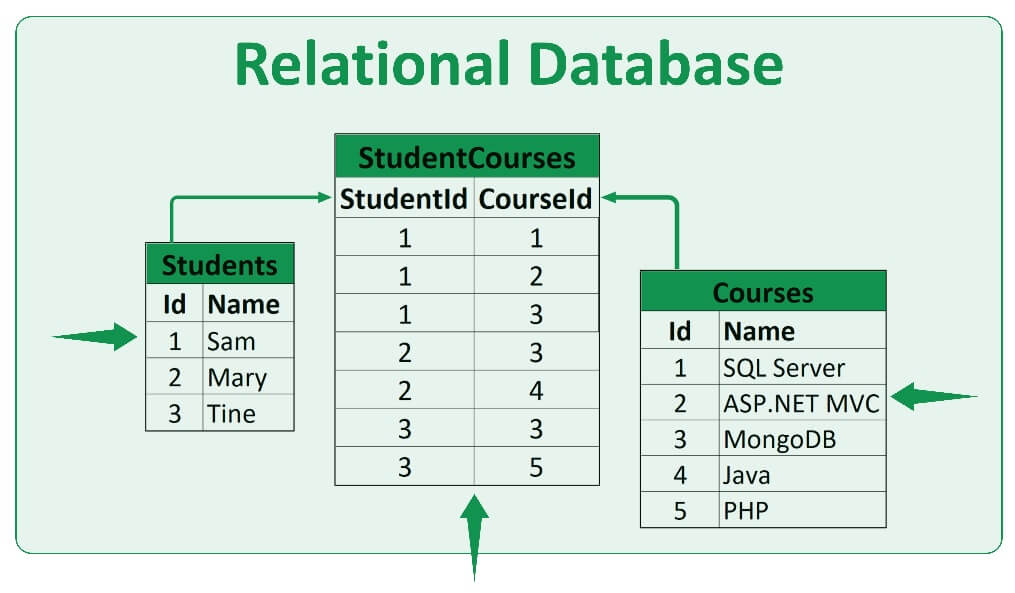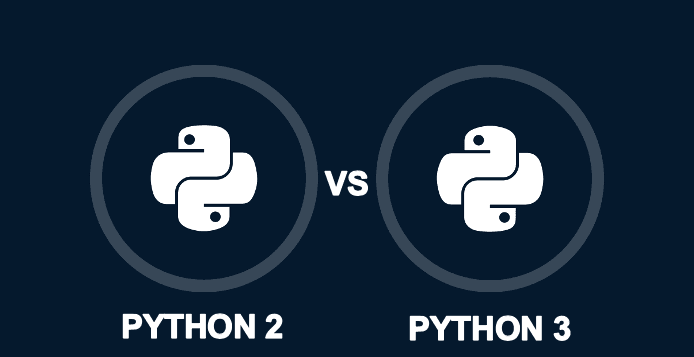Course

If you are considering breaking into data science, learning to code is mandatory. Coding is one of the main activities of data professionals. Whether you have to collect, clean, analyze, or visualize data, pretty much everything is done through programming. Hence, you need to start learning to code at the early stage of your data science journey.
So, you’re ready to get started with coding. But what programming language should you go for? This is a very classic question among data science newcomers. There are many programming languages for data science, but learning all of them simultaneously can be almost impossible and discouraging. It’s better to pick one and, once you master it, progress to another one depending on your needs or interests.
A very common debate is about what programming language is best to get started. In this regard, Python and SQL are particularly well-suited candidates to begin your coding adventure. Python and SQL are extremely popular programming languages in data science, and you won’t get very far in your career unless you’re fluent in both of them.
In the following sections, we will explain what Python and SQL are, the main differences between them, and which is the most preferable to learn first. Keep reading!
Quick Answer: SQL vs Python
In a rush? Here's a high-level overview of the differences between SQL and Python:
| Feature | SQL | Python |
|---|---|---|
| Purpose | Designed for managing and querying relational databases | General-purpose language for data science, web development, and more |
| Ease of learning | Simple, declarative syntax, easy for beginners | Beginner-friendly, readable, English-like syntax |
| Functionality | Ideal for accessing, modifying, and managing relational data | Versatile, performs tasks like data analysis, machine learning, web scraping |
| Libraries and ecosystem | Limited to database management tools (e.g., MySQL, PostgreSQL) | A rich ecosystem with thousands of libraries (e.g., pandas, NumPy, scikit-learn) |
| Use cases | Data retrieval, database management, business intelligence | Data manipulation, machine learning, automation, web development |
| Career paths | Database Administrator, Database Architect, Business Intelligence Analyst | Data Scientist, Data Analyst, Machine Learning Engineer, Software Developer |
If you want to take a deeper look, keep reading!
Why Choose Python?
Ranked first in several programming languages popularity indices, such as the TIOBE Index and the PYPL Index, Python is today the one-size-fits-all programming language.
Python is an open-source, general-purpose programming language with broad applicability in many software development domains. Due to its simple and readable syntax (close to the English language), Python is often referred to as one of the easiest programming languages to learn and use for beginner programmers. If you want to have a taste of how coding with Python looks, check out our Introduction to Python Course.
Although it was not conceived for data science when it was developed in the early 1990s’, over the years, Python has evolved, and today, it is extensively used in data science, machine learning, and data engineering. This is mainly thanks to its rich ecosystem of packages. With thousands of powerful libraries backed by its huge community of users, Python can perform all kinds of data-related tasks.
Below is a non-exhaustive list of Python use cases in data science. If you’re curious about other Python applications, check out this guide to Python uses.
- Data analysis: Python is the most powerful way to analyze data. With world-class libraries like pandas and NumPy, everything is possible with a few lines of code, from data collection and data cleaning to exploratory data analysis and statistical analysis
- Data visualization: Visualizing your data with compelling plots and charts is a great way to discover hidden patterns in your datasets and present your results. Numerous packages, such as Matplotlib, Seaborn, and Plotly, can do the magic.
- Machine learning: A subfield of Artificial Intelligence, machine learning uses algorithms to enable machines to learn patterns and trends from historical data and make predictions. Scikit-learn is a popular and intuitive package for implementing powerful machine learning models.
- Deep learning: Deep learning is part of a broader family of machine learning methods concerned with implementing artificial neural networks. These powerful algorithms are behind some of the most innovative breakthroughs in data science of the last few years. With powerful libraries and frameworks like Keras and TensorFlow, Python is the go-to language for deep learning.
Why Choose SQL?
Much of companies’ data is stored in databases, specifically relational databases. A relational database provides access to data points that are related to one another across different tables with rows and columns. In other words, relational databases are a more scalable, refined alternative to traditional spreadsheets.

Relational database diagram. Source: MongoDB
Since its development in the early 1970s by IBM, SQL (Structured Query Language) has been the most popular programming language with which to communicate, edit, and extract data from databases. Fluency in database management and SQL is a must if you want to progress in your data science career. You can learn more about what SQL is used for in our full article.
A great advantage of SQL is that it’s pretty easy to learn compared to other programming languages. This is due to its declarative, simple syntax, which is specifically designed to manage relational databases using SQL queries. A query is a statement comprising various SQL commands that together perform a specific task in a database, such as accessing, modifying, updating, and deleting data
Knowing SQL will enable you to work with different relational databases, including popular systems like SQLite, MySQL, and PostgreSQL. Despite the tiny differences between these relational databases, the syntax for basic queries is similar, making SQL a very versatile language.
Want to learn SQL? Check out our Introduction to SQL Course, or fully immerse yourself with our SQL Fundamentals Skill Track.
Python Career Paths
Python is the most in-demand skill in data science. As a result, Python is required in nearly every job in the industry.
There are plenty of career paths to pursue once you have mastered Python. Below you can find some of the most popular ones. For a more detailed list, check out this article on the top 7 data science careers. Also, if you’re looking for a role in the data industry, check out DataCamp Jobs, which can help you find roles tailored to your skills.
Data scientist
Data scientists are in great demand across sectors. Whether it’s developing machine learning models to optimize routes or dealing with genetic data to advance new treatments for rare diseases, Python is the answer to analyzing vast amounts of data.
Data scientists need to be able to apply mathematics, statistics, and the scientific method; use multiple tools and techniques for cleaning and preparing data; perform predictive analytics and artificial intelligence; and explain how these results can be used to provide data-driven solutions to business problems. Python is the most common tool used by data scientists for all these tasks.
The average salary for a data scientist in the United States, according to Glassdoor, is $113,215.
Data analyst
Data scientists and data analysts are close relatives. While data scientists focus on machine learning techniques to predict the future and deal with uncertainties, data analysts are specifically trained to deal with business problems, such as developing KPIs, creating solutions for stakeholders, and reducing business costs. Python is the go-to language for data analysts to analyze data, although other tools, including business Intelligence software like Power BI or Tableau and SQL, are equally important.
Data analysts are already in huge demand, and it seems that demand will only increase with time. Glassdoor estimates an average salary of $83,787 for these professionals.
Machine learning engineer
Machine learning engineers focus on researching, building, and designing artificial intelligence and machine learning applications to automate predictive models and make them scalable. In essence, they develop algorithms that use input data and leverage statistical models to predict an output while continuously updating outputs as new data becomes available.
While machine learning engineers have a large toolkit to do their job, Python is still an indispensable tool.
The mean annual salary of machine learning engineers is $164,820.
SQL Career Paths
Despite being around for quite some time now, SQL is still an indispensable tool for developers and data professionals worldwide. SQL is everywhere, being the go-to language for data management across industries and top-class companies such as Google, Meta, and Amazon.
As an extremely popular language, the opportunities are wide and diverse. Below is a list of some of the most popular SQL jobs.
Database architect
A database architect is responsible for designing the most suitable and reliable database for a given application. The architect develops modeling strategies to ensure that the database is secure, scalable, and performs reliably. This entails knowing all the different kinds of databases –relational, NoSQL, graph-based, distributed, etc.– and having the expertise to identify what kind of situation needs what type of database.
Glassdoor estimates the average annual salary for a database architect to be $113,427.
Software developer
Software developers create computer software and applications. They are the ones who program software, including new programs and features.
These applications often require data to work properly. Can you guess where the data is stored? Yes, relational database. That makes SQL one of the most basic skills for developers.
The average annual salary for a Software Engineer is $100,828.
If you want to learn more about salaries, check out our in-depth guide to SQL Developer Salaries.
Database administrator
Database administrators are responsible for ensuring that a database runs efficiently and securely. They maintain users' information, assign them the proper access rights according to their needs, and monitor usage. Database administrators also routinely back up stored data.
The average annual salary for this profession, according to Glassdoor, is $103,837.
Python vs SQL: Which Language Should You Learn First?
Which language should you learn first? While this question is particularly relevant for newcomers in data science, it’s important to note that, in the long run, you will need to become fluent in both Python and SQL if you want to progress in your career.
Having said this, the answer to the question will depend on your goals, priorities, and the previous programming knowledge you may have.
Python vs SQL: Which one is easier?
SQL is certainly an easier language to learn than Python. It has a very basic syntax and is designed solely to communicate with relational databases. Since a great amount of data is stored in relational databases, retrieving data using SQL queries is often the first step in any data analysis project. Learning SQL is also a great choice because it will help you internalize basic programming concepts in a user-friendly way, paving your way to more complex programming languages.
However, as a general-purpose programming language, learning Python will allow you to do much more cool stuff. For example, with Python, you can perform an end-to-end data science project, from data collection and cleaning to data analysis and visualization.
Python is much more versatile than SQL, but getting fluent takes longer. Notwithstanding this, Python is widely regarded as a beginner-friendly language because of its English-like syntax and its focus on readability.
The type of work you’re looking for is also worth considering. For example, if you’re interested in the field of business intelligence, learning SQL is probably a better option, as most analytics tasks are done with BI tools, such as Tableau or PowerBI. By contrast, if you want to pursue a pure data science career, you’d better learn Python first.
SQL vs Python for Data Analysis
When it comes to data analysis, specifically, both SQL and Python have their unique strengths and applications.
SQL for data analysis
SQL (Structured Query Language) is the go-to language for querying and managing data in relational databases. It excels in:
- Data retrieval: Efficiently extracting specific data from large databases with simple, readable queries.
- Data aggregation: Performing sum, average, and count operations to summarize data.
- Joining tables: Combining data from multiple tables to create comprehensive datasets for analysis.
- Data cleaning: Using SQL commands to filter, sort, and clean data directly within the database.
SQL's declarative syntax makes it straightforward to use, especially for tasks involving structured data stored in relational databases. It's an essential tool for data professionals working in environments where database interaction is frequent.
Python for data analysis
Python is a powerful, general-purpose programming language widely used in data science. It offers:
- Versatility: Beyond just data retrieval, Python can handle data manipulation, statistical analysis, and visualization.
- Libraries and tools: Robust libraries like pandas and NumPy for data manipulation, matplotlib and seaborn for data visualization, and scikit-learn for machine learning.
- Automation: Capabilities to automate data workflows, from data collection and cleaning to analysis and reporting.
- Integration: Seamless integration with other tools and environments, such as Jupyter Notebooks, for interactive data analysis.
Python’s flexibility and extensive library support make it ideal for performing complex data analysis tasks, developing machine learning models, and creating insightful visualizations.
When to use SQL vs Python?
The choice between SQL and Python often depends on the task at hand:
- Use SQL when you need to query and manipulate data stored in relational databases efficiently.
- Use Python when your data analysis requires more comprehensive processing, statistical analysis, or advanced visualizations.
SQL vs Python: A Detailed Comparison
Below, you can find a table of differences between Python and SQL:
| Feature | Python | SQL |
|---|---|---|
| Purpose | Used for data science, web development, automation, game development, and other software domains. | Communicate with and manage relational databases. |
| Type of language | General-purpose programming language | Domain-specific programming language |
| Open source? | Yes | Some dialects are proprietary (e.g., MS SQL Server); many are open source (e.g., MySQL, PostgreSQL). |
| Versions | Python 3 | Different dialects, such as MySQL, SQLite, and PostgreSQL. |
| Ecosystem | Over 300,000 available packages | No packages are available; it relies on database management systems. |
| Ease of learning | Python is a beginner-friendly language with English-like syntax. | SQL is a very easy-to-learn language with a simple, declarative syntax. |
| Career paths | Data scientist, data analyst, machine learning engineer, software developer, web developer, automation engineer | Database architect, database administrator, business intelligence analyst, data engineer, software developer |
| Advantages | Readability, versatility, huge community of users, extensive library support, cross-platform compatibility | Extremely easy to learn, similar syntax among different SQL dialects, optimized for database interactions, high performance in data retrieval and manipulation |
| Disadvantages | Weak performance with huge amounts of data, poor memory efficiency, slower execution time for certain tasks | Applications restricted to database management, some dialects are costly, limited to relational data structures |
| Popularity | 1st in TIOBE Index (July 2024), most popular language in PYPL Index (July 2024) | 10th in TIOBE Index (July 2024), widely used for database management but less versatile |
Conclusion: SQL and Python Are Better Together
We hope you found this article insightful. Python and SQL are both indispensable tools for data professionals; hence, while it’s better to pick one to learn at the beginning of your data science journey, in the long run, you will need to become a master of both of them.
Willing to learn Python and SQL? We have you covered. Check out the following resources and get started today.
- A large course catalog with 500+ data science courses covering programming, statistics, visualization, and more.
- Subscribe to our blog for the latest insights.
- Subscribe to the DataFramed podcast.
- Check out our Python for data science cheat sheet and our SQL basics cheat sheet.
FAQs
What are the main differences between procedural programming in Python and declarative programming in SQL?
- Procedural Programming in Python: Python follows a procedural programming paradigm, which means you write sequences of instructions to perform computations. This allows for complex logic, loops, and conditional statements, making Python very flexible for a wide range of tasks beyond just data querying, such as data processing, machine learning, and automation.
- Declarative Programming in SQL: SQL uses a declarative programming paradigm where you specify what you want to achieve rather than how to achieve it. SQL queries are used to declare the desired data and the database management system handles the retrieval process. This makes SQL simpler for database queries but less flexible for general-purpose programming tasks.
How does the performance of Python compare to SQL for large-scale data processing?
- Python: While Python is very powerful for a variety of data tasks, its performance can degrade with very large datasets, especially if not optimized properly. Libraries like pandas and Dask can help handle larger data, but Python generally consumes more memory and is slower than SQL for purely data retrieval and aggregation tasks.
- SQL: SQL is highly optimized for querying large databases efficiently. Database management systems (DBMS) use indexing, query optimization, and other techniques to handle large-scale data quickly. For tasks involving large-scale data retrieval and manipulation within a database, SQL often outperforms Python.
Can Python and SQL be integrated, and how is this typically done in data science projects?
Integration Methods: Python and SQL are often integrated in data science projects to leverage the strengths of both languages. Common methods include:
- Using Libraries: Python libraries like SQLAlchemy, pandas, and pyodbc allow for seamless SQL queries from within Python scripts. This enables data retrieval with SQL followed by data manipulation and analysis in Python.
- Database Connections: Establishing connections to SQL databases directly from Python scripts using connection libraries (e.g., psycopg2 for PostgreSQL, mysql-connector-python for MySQL) to execute queries and fetch data.
- ETL Processes: Combining SQL for extracting and loading data and Python for transforming data in ETL (Extract, Transform, Load) workflows.
What are the security implications of using Python vs. SQL in data projects?
- SQL: Since SQL is used to interact directly with databases, it is crucial to implement security best practices such as using parameterized queries to prevent SQL injection attacks, managing user permissions, and ensuring secure database connections.
- Python: Python scripts can expose sensitive data if not properly managed. It's important to secure Python applications by following practices such as encrypting sensitive data, using secure APIs, managing dependencies to avoid vulnerabilities, and ensuring secure coding practices to prevent exploits.
How does the community support for Python and SQL differ, and why is this important?
- Python: Python has a vast and active community, which means there are numerous resources available, including tutorials, forums, documentation, and open-source libraries. This strong community support is crucial for troubleshooting, learning new skills, and staying updated with the latest developments in the language.
- SQL: While SQL also has a strong community, its support is often more fragmented due to the various dialects (e.g., MySQL, PostgreSQL, SQL Server). Each DBMS has its own specific community and resources. However, the core concepts and queries are generally well-documented and supported across all platforms.

I am a freelance data analyst, collaborating with companies and organisations worldwide in data science projects. I am also a data science instructor with 2+ experience. I regularly write data-science-related articles in English and Spanish, some of which have been published on established websites such as DataCamp, Towards Data Science and Analytics Vidhya As a data scientist with a background in political science and law, my goal is to work at the interplay of public policy, law and technology, leveraging the power of ideas to advance innovative solutions and narratives that can help us address urgent challenges, namely the climate crisis. I consider myself a self-taught person, a constant learner, and a firm supporter of multidisciplinary. It is never too late to learn new things.
